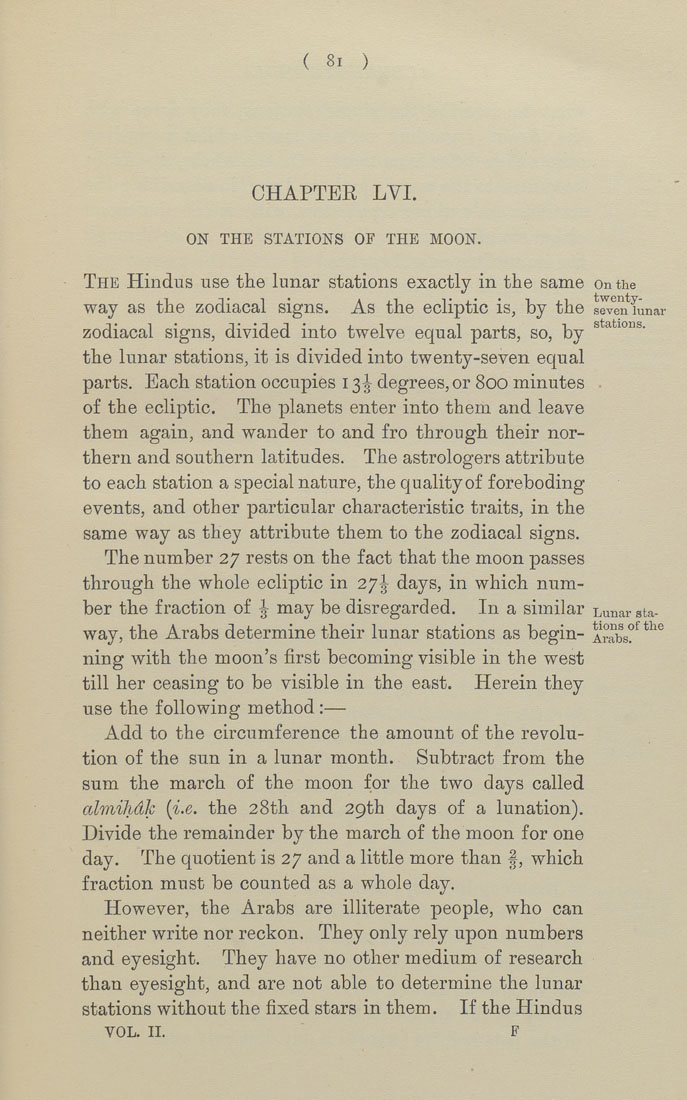Bīrūnī, Muḥammad ibn Aḥmad, Alberuni's India (v. 2)
(London : Kegan Paul, Trench, Trübner & Co., 1910.)
|
||
|
|
|
|
| Page 81 |

( 8i ) CHAPTEE LVI. ON THE STATIONS OF THE MOON. The Hindus use the lunar stations exactly in the same on the way as the zodiacal signs. As the ecliptic is, by the sI^'Silunar zodiacal signs, divided into twelve equal parts, so, by ^ ^ ^°"^' the lunar stations, it is divided into twenty-seven equal parts. Each station occupies 13^ degrees,or 800 minutes ^ of the ecliptic. The planets enter into them and leave them again, and wander to and fro through their nor¬ thern and southern latitudes. The astrologers attribute to each station a special nature, the quality of foreboding events, and other particular characteristic traits, in the same way as they attribute them to the zodiacal signs. The number 27 rests on the fact that the moon passes through the whole ecliptic in 27^^ days, in which num¬ ber the fraction of |- may be disregarded. In a similar Lunar sta- way, the Arabs determine their lunar stations as begin- 1X4?^*^° ning with the moon's first becoming visible in the west till her ceasing to be visible in the east. Herein they use the following method:— Add to the circumference the amount of the revolu¬ tion of the sun in a lunar month. Subtract from the sum the march of the moon for the two days called ctlmihdk (i.e. the 28th and 29th days of a lunation). Divide the remainder by the march of the moon for one day. The quotient is 27 and a little more than f, which fraction must be counted as a whole day. However, the Arabs are illiterate people, who can neither write nor reckon. They only rely upon numbers and eyesight. They have no other medium of research than eyesight, and are not able to determine the lunar stations without the fixed stars in them. If the Hindus VOL. II. F |
| Page 81 |







